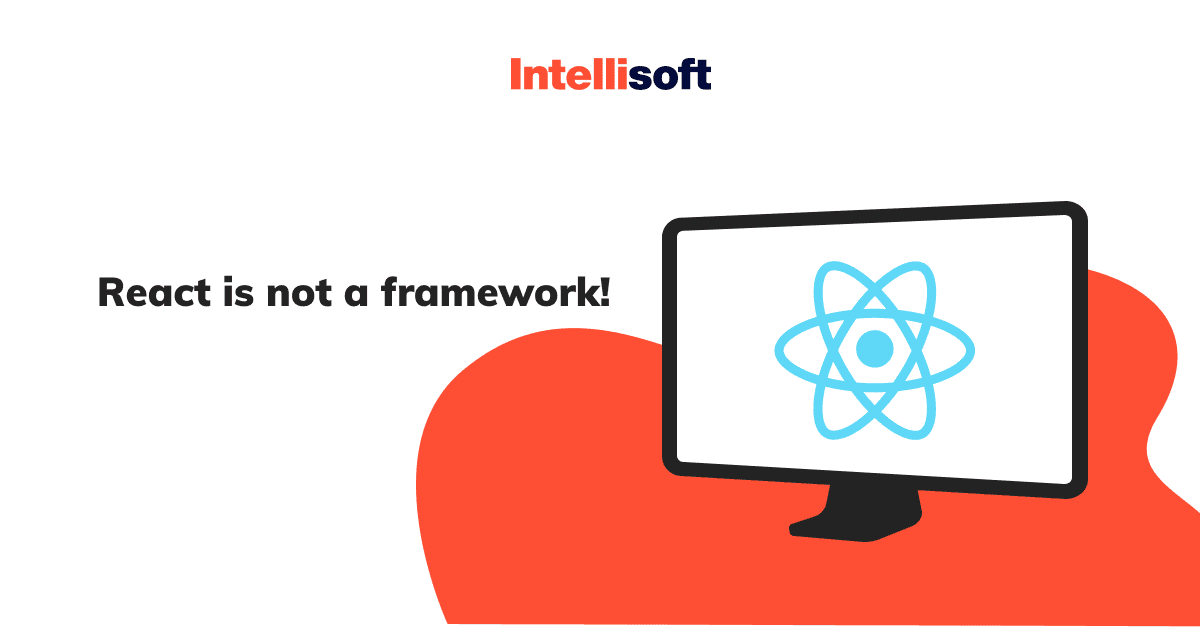When developing modern web applications, Angular and ReactJS are two of the most popular tools. However, they have different approaches to web development. Angular is a comprehensive framework that provides a structured development environment with built-in features and functionalities. On the other hand, ReactJS is a library that enables developers to build user interfaces using reusable components. With web development rapidly evolving, choosing the proper framework is crucial for building efficient and scalable web applications. Angular vs React are famous competitors with large communities and vast libraries, allowing developers to create unique user experiences. However, they have distinct strengths and weaknesses, making it challenging to decide which aligns best with your goals.

Therefore, this Angular vs React article comprehensively compares the two frameworks. It aims to help you make an informed decision about choosing the most suitable framework for your project. Let’s compare Angular vs React.
Table of Contents
Comparing Angular vs React vs Vue
When it comes to choosing a JavaScript framework, developers often find themselves torn between Angular vs React vs Vue. Each framework has its own unique advantages and strengths, making it crucial to understand the fundamental differences among them.
Angular, developed by Google, is a comprehensive framework that provides a full suite of tools for building complex web applications. It follows the Model-View-Controller (MVC) architectural pattern and embraces static typing through the use of TypeScript. Angular’s extensive ecosystem includes features like Angular CLI for scaffolding projects, Angular Material for pre-built UI components, and RxJS for reactive programming. This rich set of tools can empower developers to create robust and scalable applications, but it also contributes to Angular’s reputation for having a steeper learning curve compared to React and Vue.
React, on the other hand, is a JavaScript library maintained by Facebook. It focuses on building reusable UI components and follows a unidirectional data flow architecture. React’s virtual DOM implementation allows for efficient updates to the actual DOM, resulting in high performance. The ecosystem around React is vast, with tools like Create React App for quick project setup, Redux for state management, and React Router for handling navigation. React’s component-based architecture promotes reusability and modularity, making it a popular choice for building interactive user interfaces.
Vue, often referred to as the “progressive” framework, offers a blend of simplicity and flexibility that appeals to many developers. Vue’s core library is focused on the view layer only, making it easy to integrate into existing projects. Despite its minimal core, Vue provides features like Vue Router for routing and Vuex for state management, enabling developers to scale up their applications as needed. Vue’s gentle learning curve, clear documentation, and straightforward syntax make it an attractive option for beginners and experienced developers alike.
Vue vs React vs Angular frameworks have their own learning curve, with Angular being the most complex, followed by React and Vue. Angular’s steep learning curve is due to its extensive documentation and the need to understand TypeScript. React’s learning curve is relatively gentle, especially for developers already familiar with JavaScript and HTML. Vue, with its gentle learning curve, can be quickly picked up by developers new to JavaScript frameworks.
What Is the Main Difference between Angular js vs React js?
The main difference between React vs Angular is that the former uses a virtual Document Object Model (DOM). React is the winner when it comes to this factor.
DOM is not the only thing that makes Angular different from React. Consider other factors below in our React vs Angular vs Vue comparison.
Comparing React vs. Angular
Are you wondering why React is better than Angular (when comparing Angular vs React 2024)? First of all, it is worth noting that React was developed several years prior to Angular and has undergone many changes. As a result, it has become a convenient framework that many developers prefer to use.

In addition, React has a vast number of codes in its database (about 100 thousand), as well as ready-made solutions (300 of them). The program is essentially an open-source library. The main difference between Angular vs React 2023 is that the former has a wireframe structure. In its database, Angular has 1,800 ready-made solutions. However, this framework is rather large in size.
Both frameworks work with native and web applications.
React:
- Native applications are developed with React Native
- Cross-platform (Android, iOS) is developed with React Native Renderer
Angular:
- Native apps are developed with NativeScript
- Hybrid application development takes place with the Ionic Framework
At the same time, React Native vs Angular have its benefits and drawbacks. Let’s dwell on this in more detail.
Companies that use Angular
- PayPal
- Upwork
- The Guardian
- Nike
- HBO
- Sony
- General Motors
Companies that use React.js
- Airbnb
- Dropbox
- Alipay
- Netflix
What Are the Advantages and Disadvantages of React?
React.js is a JavaScript library for user interface (UI) development introduced in May 2013. Facebook manages this framework. Also, it has a widespread, open-source community of developers.
- This framework is based on simple programming languages
- The extreme flexibility of the application
- Usage of the DOM
- The framework can withstand heavy loads
- React and SEO get along well. It is easier for search bots to browse websites and improve user interaction with your resource
- Ensures that parental data remains unchanged
- Has an open-data library
- Low database weight
- Provides a seamless migration between versions
As for the disadvantages, there are fewer of them:
- Irregularity of documentation
- A large selection of tools
- It takes a long time to master all the nuances
- Now, let’s move on to the features of Angular
Related readings:
- TOP-10 Programming Languages in Outsourcing Software Development
- Kubernetes VS Docker: Compare & Contrast Guide
- Laravel vs CodeIgniter: Choosing Best PHP Framework in 2023
- React.JS and React Native: Explore the Best Alternatives in 2023
Advantages and Disadvantages of Angular
It is another open-sourced JavaScript framework for web & mobile software development known since September 2016. Google’s Angular Team manages Angular. The native community is growing at a pretty impressive pace. Six versions of this framework were already released.
Angular has the following advantages:
- A large number of various features
- Functions are interdependent
- Information can be obtained directly, with no third parties involved
- It is possible to work in one section of the program using the available data
- Minimal risk of errors
At the same time, Angular has such drawbacks, as:
- It is based on a complex programming language
- Possible errors during migration between versions
Comparing React vs Angular vs Vue
Although React and Angular are often pitted against each other, Vue has gained significant popularity in recent years. Let’s compare these frameworks based on various parameters to better understand their differences.
When it comes to choosing a JavaScript framework for web development, developers are spoiled for choice. React vs Angular vs Vue are three of the most popular frameworks available, each with its own strengths and weaknesses. In this article, we will dive deeper into the differences between these frameworks and explore Angular vs React performance, popularity, market share, learning curves, and more.
Angular under the Loop
Now, we have briefly listed the main pros and cons of Angular. It is time to dig deeper into this topic and explain when Angular might suit your project. Is it better to compare Angular vs React? When it comes to mobile software development, Angular has an extra framework for it, just like React. Still, a great share of work is done by Ionic. No matter whether a developer plans to create web applications of small, middle, or large size, Angular will do.
No extra modules are usually needed to create software with its help. The angular package alone is enough to implement such functions as data binding and dependency injection.
Google provides the ongoing support of Angular, which adds credibility to this framework. Still, the updates are so frequent that the documentation falls behind.
- Web Components Support
Angular Web Components are based on the new Web Components standard, unlike the closed AngularJS modularization system. In practice, this means that AngularJS allows you to directly use any component written as a Web Component without resorting to layout code.
- Using Typescript
The biggest commercial advantage of TypeScript is its toolkit. This language provides modern autocomplete, navigation, and refactoring. Such tools become almost indispensable when working on large-scale projects.
- Angular CLI
The command line input (CLI) of the Angular framework makes it easy to create an application that works by default. This is in line with the best modern trends.
- Excellent Performance
Angular doesn’t conduct a deep comparative analysis of objects. If you add an element to the data array, no path change will be detected. This also applies to the properties of the object, as long as they are not directly related to the View.
Angular’s Functionality
- Feature 1: Two-way binding, which allows developers to change data in one or more interface element(s).
- Feature 2: Reactive applications. Developers can quickly create the necessary products. They function without the need for a reboot and instantly appear when a user is moving to a new page. Work with users is carried out asynchronously. Moreover, the background interface improves the work and ensures convenient usage.
- Feature 3: Directives. With their help, the developer can describe the elements and enlarge the HTML code. Angular websites contain only basic directives. Directives can be extended, and self-created directives can be applied to other apps.
- Feature 4: Delayed loading. This feature provides the application with what it really needs for a given page.
- Feature 5: Fast rendering. Thanks to the use of shadow DOM technology, rendering is four times faster than in the previous version.
- Feature 6: Material design. Angular Material UI has a great look and is easy to use.
As for the pitfalls, here are some details that you should consider:
- The variety of structures (Injectables, Components, Pipes, Modules, etc.) makes the learning process rather complicated when comparing Vue vs React vs Angular, as the first two options that only have a “Component.”
- Relatively slow performance, given the various metrics. On the other hand, this can be easily solved using the so-called “ChangeDetectionStrategy,” which helps control the process of rendering components manually.
React.js under the Loop
Above, we have briefly listed the main pros and cons of React.js. It is time to dig deeper into this topic and explain when React might suit your project. Is it better when comparing React vs Angular? React cannot cope with the development process on its own. A developer should be ready that they may have to install additional modules and libraries. For example, this framework has to be incorporated with Cordova. Also, there’s an extra component known as React Native. With the help of this framework, it’s possible to come up with website apps of different sizes, from small one-page solutions to multiple-page applications.
When using React.js, the software requires extra libraries to be used. It’s necessary to optimize various processes. Plus, functions like project generation and form validation demand extra modules.
React is regularly updated. Thus, the one who chooses React.js to design and build software must be a patient, continuous learner. Also, the developers risk missing some important updates even though the native community does its best to provide developers with the most recent docs and materials. Community support on relevant forums can come in handy when solving various issues.
- Separation of Data from Its Presentation
Although React components have the concept of “state,” they are more suitable for short-term storage. - Easy to Start Writing
Writing code in React is very similar to working in HTML, making it easy to start writing code without missing the syntax. - Binding to the DOM Doesn’t Matter
Say, if in the last five years a developer has already written some front-end components with or without a framework, they should understand all the complexities of the DOM elements functionality.
React js vs Angular Performance: Why Does React Perform Faster?
If we compare Angular vs React vs Vue, React is quicker than Angular, and here is why. This library has a zipped file size of 34.8KB, allowing you to:
- Use a virtual DOM for max efficiency by simply re-rendering nodes;
- Support server-side rendering for enhanced social activities and improved SEO;
- Support bundling to reduce the end user’s resource load.

It is an open-source library. What does it mean? Basically, anyone can access and master React. This framework provides a declarative method for defining UI components. React DOM is an associated library that provides rendering and DOM diffing. Redux is a library that provides data storage, and React-Redux connects React and Redux.
React features are simpler than anyone may think. A developer does not need to create a class, as well as use extends and a constructor. The main problem is that many people misuse classes. With pure features, it’s harder to write bad code. In any case, expert developers from Intellisoft guarantee that all classes will be used properly, and the final product will be mistake-free, thanks to their expertise.
As for the pitfalls, here are some details that you should consider:
Build tools are required, and the only problem with using them in JavaScript is that there are no standard reusable solutions for your projects. This can significantly increase the time you spend translating ideas into code.
React is not a framework, so working with it can be frustrating. You know, when you have a burning deadline for projects and the first page of your React directory no longer works, you can get out of your temper.
Finally, the React community is not yet formed. Thus, it is not that easy to solve all of the possible issues fast.
Testing in Angular js vs React js
Because of the upgrades, the codebases expand exponentially. Manual unit is a rather time-consuming process, so it’s better to automate them. Here are some ideas to review when comparing Angular vs React:
Angular – Karma & Jasmine
The first one is the default option for the native apps. This test runner suits diversified requirements to match the workflow. The idea is to examine the piece of software on multiple devices in different browsers and ensure smooth code functioning.
The second one, it is a behavior-driven development (BDD) framework for conducting software testing. It does not require a DOM. Jasmine is independent of any JavaScript framework.
React – Enzyme and Jest
The first option is suitable for React only. It allows for swift examination and interaction with components. Enzyme adds extra features to the testing process.
The second option is compatible with any JavaScript app like Angular. Facebook applies Jest to examine its services and React apps.
Both tools integrate well with each other.
Angular vs React js Use Cases
Case #1: React is easier to apply for software with a complex user interface (UI). Its learning curve is way shorter than for many other languages.
Case #2: Angular is a full package as it possesses multiple built-in features. It’s not professional to compare these features with a JavaScript library such as React.
Verdict: Angular vs React
The decision between Angular vs React ultimately depends on the project’s needs and the team’s strengths.
Angular is a comprehensive solution with a wide range of tools and features. While it may have a few drawbacks, it offers a robust and powerful framework for building complex web applications.
In contrast, React is known for its exceptional flexibility and adaptability. Its core advantages include Virtual DOM and seamless integration with other frameworks, libraries, and tools. React is also relatively easy to start but requires experience and knowledge of other JavaScript frameworks to fully leverage its potential.
Angular, on the other hand, may appear more complex at first glance. However, this complexity is a testament to its power and capabilities. While it does require a significant investment of time and focus on overcoming its steep learning curve, once you’ve mastered it, you’ll find that Angular is remarkably easy to maintain and expand upon, particularly for large-scale apps and projects. This reassurance can instill confidence and motivation in developers considering Angular.
When comparing React vs Angular, beginners start with React and eventually move to use Angular.












